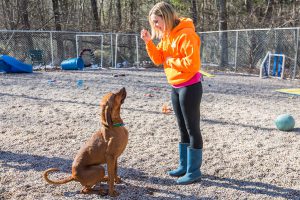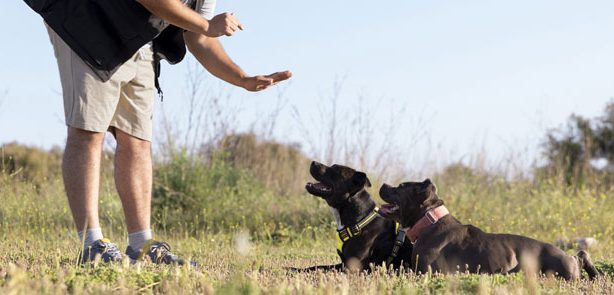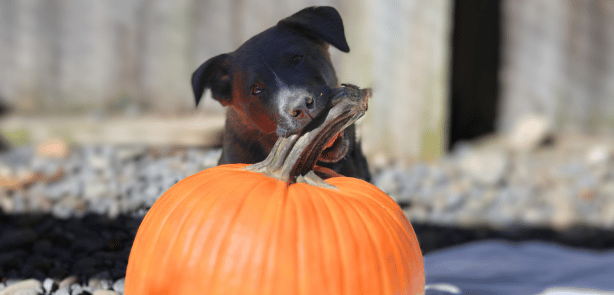Finding a Certified Trainer or Behaviorist
Finding a Certified Trainer or Behaviorist
Whether you have a pooch who is chewing everything in the house, barking like crazy, or suffering from separation anxiety – many of us find ourselves in need of some help. Sometimes finding the right professional to provide that help can be a challenge, though. So the question is … do you need a dog trainer or dog behaviorist?
A dog trainer will help teach your dog new skills, such as sit, stay, come, or how to walk on a leash without dragging you down the street. A behaviorist will help with more in depth behavioral issues, like fear, aggression, out-of-control barking, destructive chewing, biting, and separation anxiety. The behaviorist will help you modify or totally change behaviors. After conducting a thorough interview and analyzing your pooch, the behaviorist will design a plan based on that analysis.
 *If a pet is suffering from severe emotional distress or if there is concern that the pet will injure himself, other animals or people, pet guardians are urged to contact the Animal Behavior Society or the American College of Veterinary Behaviorists for a referral to a certified applied animal behaviorist or a board-certified veterinary behaviorist.
*If a pet is suffering from severe emotional distress or if there is concern that the pet will injure himself, other animals or people, pet guardians are urged to contact the Animal Behavior Society or the American College of Veterinary Behaviorists for a referral to a certified applied animal behaviorist or a board-certified veterinary behaviorist.
Choosing the Right Trainer
Baypath Humane Society supports science-based humane training methods that utilize redirection and positive reinforcement to shape desired behaviors in companion animals. Methods of rewards such as food, praise, petting, and play that are based on a mutual understanding, kindness, and respect between the pet and the guardian have proven to be successful in managing behavior. Baypath Humane Society opposes any methods, training tools, or aids that cause physical harm or discomfort to an animal.
Are you looking for a class setting, either for socialization or to work on some new skills?
See our updated list of trainers and behaviorists in the greater New England area.
What if you do not see someone in your area or are having trouble getting into a class?
Reach out to us via email at [email protected]
You can also check the following links for a list of certified trainers who use only positive reinforcement:
Have you found a trainer in your area and want to make sure it’s a good fit?
We highly recommend asking these 5 questions:
- What do you do when the dog does what you want them to do?
The trainer asks or signals the dog to sit and the dog sits.
A trainer whose methods are based on scientific principles and positive reinforcement will reinforce that behavior with something that individual dog finds reinforcing, such as high value treats/food, toys or lots of praise.
- What do you do when the dog does not do what you want them to do?
The trainer asks or signals the dog to sit and the dog does not sit
A trainer whose methods are based on scientific principles and positive reinforcement will first assess if the cued behavior is too difficult or the environment is too distracting – in which case the trainer will either simplify or move the dog to a less distracting environment. If neither of those things is the case, the trainer would wait momentarily and re-cue the behavior and if the behavior still does not occur the trainer would reevaluate – “Am I asking the dog for something that is too difficult? Is there a way to break down the behavior into smaller pieces that the dog can be successful at? Am I being clear with my body language in a way that the dog can understand what I am asking?” The trainer would then modify her/his training plan for that behavior to ensure the dog is being set up for success.
Of note: In this example of sit, what should NOT be done is push the dog into position. No learning happens that way. Furthermore, the dog should not be punished, either verbally or physically, for not understanding what the trainer has asked for.
- What do you do when the dog presents undesirable behavior?
Counter surfing (stealing food from the counter) is a good example. Yelling at the dog, physically correcting the dog, or putting the dog in a time-out after the fact, are all ineffective ways of handling this situation. A combination of management and training (management = human-don’t leave food where the dog can get it before you’ve trained behaviors such as “leave it” / training = dog – train “leave it”, “settle”, etc.)
- What do you do when a dog jumps up?
Teach an incompatible/desirable behavior – and that incompatible behavior (e.g. “sit” “4 on the floor”, or, “go get a toy”) needs to be cued before the unwanted behavior occurs. We don’t want the dog to practice the unwanted behavior.
- What equipment do you use for the dog when training?
Recommended: Flat-buckle collar, martingale collar, ideally harness (we don’t want pressure on the trachea while learning)
AVOID any trainer who suggests: choke collar, prong or e-collar (shock collar)
Two terms to keep in mind
Punishment: There are innumerable articles on why punishment does NOT work, and the mental and emotional short and long-term fallout that occurs when using it.
Having a basic understanding of behavior, reinforcement and punishment before you contact a trainer, will help you make the right decision for you and your dog. We strongly suggest reading the AVSAB (American Veterinary Society of Animal Behaviorists) position statement on punishment used in behavior modification, and why it is ineffective and inhumane.
You can find that statement here: AVSAB Punishment Position Statement
Dominance: As dog guardians, we do not need to dominate our dogs, and any trainer referring to a need to dominate a dog is a trainer you should run, not just walk, away from. Trainers who talk about dominance show that they have no background in science-based training, nor are they interested in learning about how to increase our ability to communicate with our dogs more effectively.
Please read the AVSAB’s statement on dominance to understand where these misconceptions originated and why they are so damaging to our relationship with our animals.
You can find that statement here: AVSAB’s Position Statement on Dominance Theory
You can also see the American Veterinary Society for Animal Behavior’s guide to How to Choose a Trainer for some great tips and questions to ask.
If you are a dog owner, whether it’s a Baypath dog or not, and would like help in your search for the right trainer, please email us and we would be happy to assist!
Recommended Trainers
Trainers and behavior consultants: If you are a positive reinforcement trainer and would like to list your services with us, please email us.
Common Acronyms
BCBA-D – Board Certified Behavior Analyst with Doctorate
CAAB – Certified Applied Animal Behaviorist
CBCC – Certified Behavior Consultant Canine
CDBC – Certified Dog Behavior Consultant
CPDT-KA – Certified Professional Dog Trainer – Knowledge Assessed
CSAT – Certified Separation Anxiety Trainer
DVM – Doctor of Veterinary Medicine
DACVB – Diplomate of the American College of Veterinary Behaviorists
Ph.D. – Doctor of Philosophy


